Circuit breakers are devices whose task is to protect the electrical line from damage under the influence of a large current. These can be both short-circuit overcurrents, and simply a powerful electron flow that passes through the cable for a sufficiently long time and causes it to overheat with further melting of the insulation. The circuit breaker in this case prevents negative consequences by turning off the current supply to the circuit. In the future, when the situation returns to normal, the device can be turned on again manually.
Circuit breaker functions
Protective devices are designed to perform the following main tasks:
- Switching of the electrical circuit (the ability to turn off the protected area in the event of a power failure).
- De-energization of the entrusted circuit when short-circuit currents occur in it.
- Protection of the line against overloads when an excessive current passes through the device (this happens when the total power of the devices exceeds the maximum allowable).
In short, AVs simultaneously carry out a protective and control function.
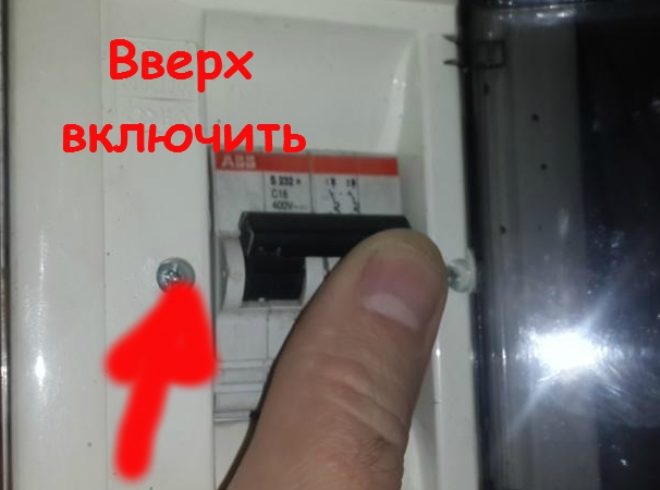
Main types of switches
There are three main types of AB, which differ from each other in design and are designed to work with loads of different sizes:
- Modular. It got its name because of the standard width, a multiple of 1.75 cm. It is designed for small currents and is installed in household power supply networks, for a house or apartment. As a rule, this is a single-pole machine or a two-pole one.
- Cast. It is called so because of the cast body. It can withstand up to 1000 Amps and is used mainly in industrial networks.
- Air. Designed to work with currents up to 6300 Amperes. Most often this is a three-pole machine, but now devices of this type are being produced with four poles.
A single-phase circuit breaker is a circuit breaker that is most common in household networks. It comes in 1 and 2 poles. In the first case, only the phase conductor is connected to the device, and in the second case, the zero conductor is also connected.
In addition to the listed types, there are also residual current devices, denoted by the abbreviation RCD, and differential automata.
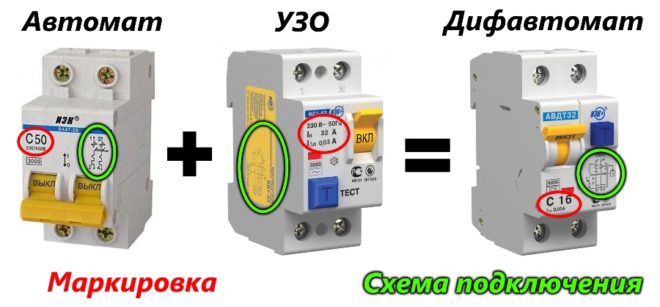
The former cannot be considered full-fledged ABs, their task is not to protect the circuit and the devices included in it, but to prevent electric shock when a person touches an open area. The differential circuit breaker is a combination of AB and RCD in one device.
How are circuit breakers arranged?
Consider in detail the device of the circuit breaker. The body of the machine is made of dielectric material. It consists of two parts, which are connected by rivets. If it is necessary to disassemble the body part, the rivets are drilled out, and access to the internal elements of the circuit breaker is opened. These include:
- Screw terminals.
- Flexible conductors.
- Control handle.
- Movable and fixed contact.
- Electromagnetic release, which is a solenoid with a core.
- Thermal release, which includes a bimetallic plate and an adjusting screw.
- Gas outlet.
On the rear side, the automatic protective fuse is equipped with a special clamp with which it is mounted on a DIN rail.
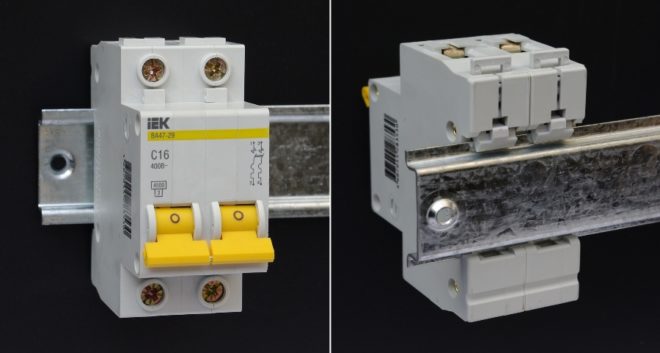
The latter is a metal rail with a width of 3.5 cm, on which modular devices are attached, as well as some types of electric meters. To connect the machine to the rail, the body of the protective device should be inserted behind its upper part, and then snap the latch by pressing on the lower part of the device. You can remove the circuit breaker from the DIN rail by prying the latch from the bottom.
The lock of the modular switch can be very tight. To attach such a device to a DIN rail, you must first pick up the latch from below and bring the protective device into place of the fastener, and then release the locking element.
You can make it easier - when you snap the latch, press firmly on its lower part with a screwdriver.
It is clear why you need a circuit breaker in the video:
The principle of operation of the circuit breaker
Now let's figure out how the network protector works. It is connected by lifting up the control handle. To disconnect the AB from the network, the lever is lowered down.
When the automatic circuit breaker is operating in normal mode, the electric current, with the control handle raised up, flows to the device through the power cable connected to the upper terminal. The flow of electrons goes to the fixed contact, and from it to the moving one.
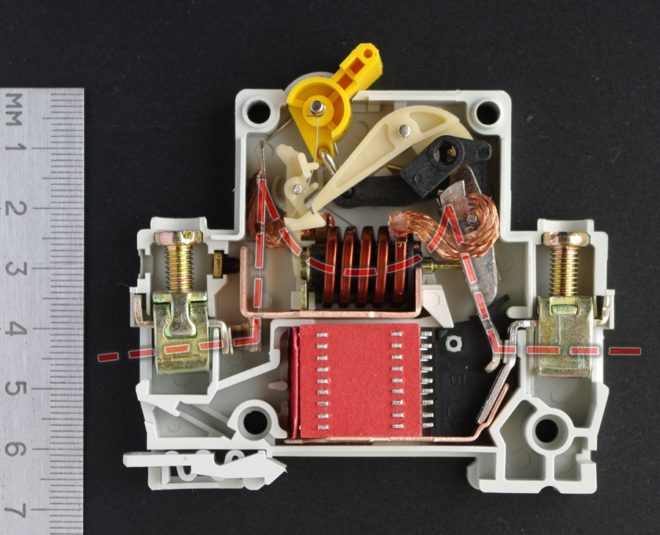
Then, through a flexible conductor, the current flows to the solenoid of the electromagnetic release. From it, along the second flexible conductor, electricity goes to the bimetallic plate included in the thermal release. After passing through the plate, the flow of electrons through the bottom terminal goes into the connected network.
Features of the thermal release
If the current of the circuit in which the circuit breaker is installed exceeds the rating of the device, an overload occurs. The flow of high-power electrons, passing through the bimetallic plate, has a thermal effect on it, making it softer and forcing it to bend towards the disconnecting element. When the latter comes into contact with the plate, the machine is triggered, and the current supply to the circuit stops. Thus, thermal protection helps to prevent excessive heating of the conductor, which can lead to melting of the insulating layer and failure of the wiring.
The heating of the bimetallic plate to such an extent that it bends and causes the AB to operate occurs over a certain time. It depends on how much the current exceeds the nominal value of the machine, and can take both a few seconds and an hour.
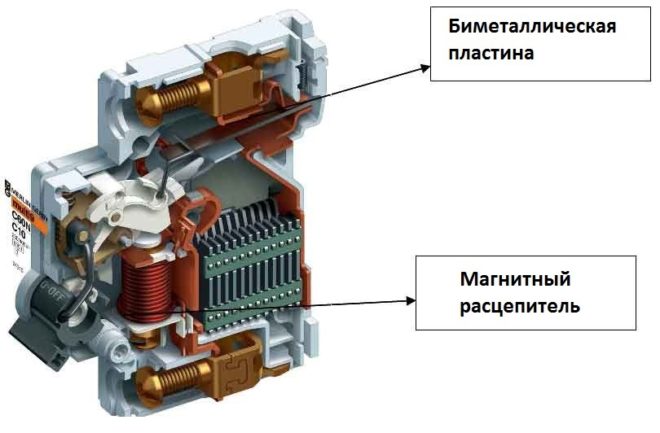
The operation of the thermal release occurs when the circuit current exceeds the nominal value of the machine by at least 13%. After the bimetallic plate has cooled down and the value of the current current has normalized, the protective device can be turned on again.
There is another parameter that can affect the operation of the AB under the influence of a thermal release - this is the ambient temperature.
If the air in the room where the machine is installed is at a high temperature, the plate will heat up to the tripping limit faster than usual and may trip even with a slight increase in current. Conversely, if the house is cold, the plate will heat up more slowly, and the time before the circuit will turn off will increase.
The operation of the thermal release, as was said, requires a certain time during which the circuit current can return to normal. Then the overload will disappear and the device will not turn off. If the magnitude of the electric current does not decrease, the machine de-energizes the circuit, preventing the melting of the insulating layer and preventing the cable from igniting.
The cause of overload is most often the inclusion in the circuit of devices whose total power exceeds the calculated one for a particular line.
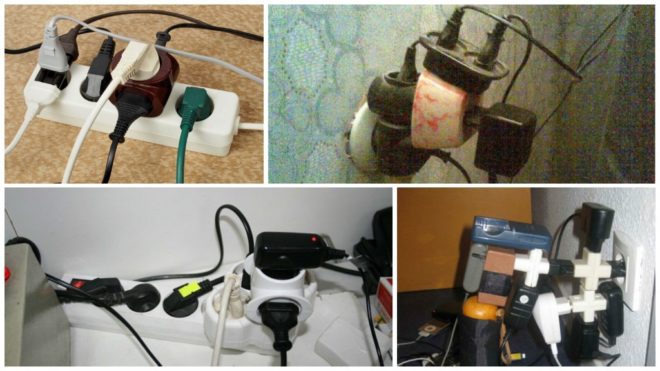
Nuances of electromagnetic protection
The electromagnetic release is designed to protect the network from short circuits and, according to the principle of operation, differs from the thermal one. Under the action of short-circuit supercurrents, a powerful magnetic field arises in the solenoid. It moves aside the coil core, which opens the power contacts of the protective device, acting on the release mechanism. The power supply to the line is interrupted, thereby eliminating the risk of ignition of the wiring, as well as the destruction of the closing installation and the circuit breaker.
Since in the event of a short circuit in the circuit there is an instantaneous increase in current to a value that can lead to serious consequences in a short time, the operation of the machine under the influence of an electromagnetic release occurs in hundredths of a second. True, in this case, the current should exceed the rating of AB by 3 or more times.
Clearly about circuit breakers in the video:
When the contacts of the circuit through which the electric current flows open, an electric arc occurs between them, the power of which is directly proportional to the magnitude of the mains current. It has a destructive effect on the contacts, therefore, to protect them, the device includes an arc chute, which is a set of plates installed parallel to each other.
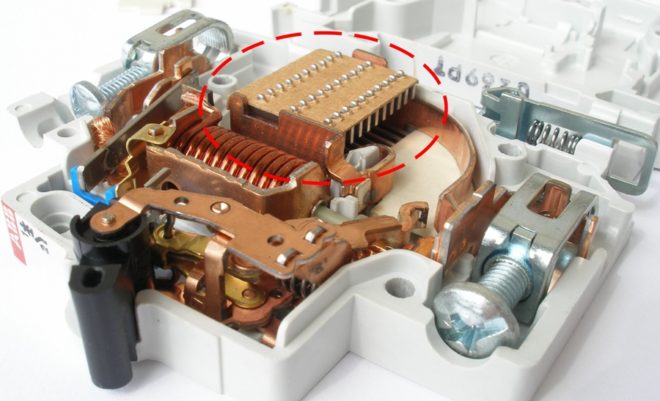
Upon contact with the plates, the arc is crushed, as a result of which its temperature decreases and attenuation occurs. The gases that have arisen during the appearance of an arc are removed from the body of the protective device through a special hole.
Conclusion
In this article, we talked about what circuit breakers are, what these devices are and on what principle they work. Finally, we say that circuit breakers are not intended to be installed in a network as ordinary switches. Such use will quickly lead to the destruction of the contacts of the device.

